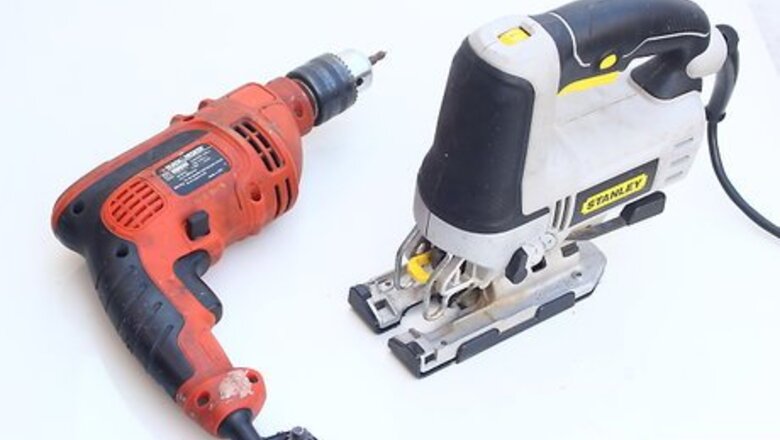
views
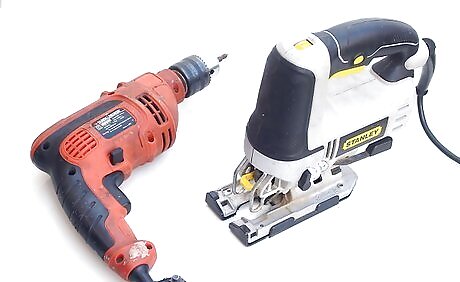
If you pare it down to the absolute basics, all you need is a saw and a drill, but to do the job right you really need: Hand saw with a fairly fine cross-cut blade. A tenon saw of back saw is perfect for this. Use this saw to cut out the major parts. Coping saw or electric jig or sabre saw. Use one of these to round the corners of the sole, or if you're short on cash and patient use a wood rasp (a kind of file) or sandpaper. If you're not very skilled at sawing, you might want to get the rasp, too. It's great for cleaning up those rough coping saw edges. A hand or electric drill. If you buy one, get an electric with a 3/8" chuck. It probably costs less than a good hand drill and has more uses. If you go the hand route, be sure to get the right type of bit. If it's an egg-beater style drill then buy a 1/4" drill or a 3/8" with a 1/4" shank. If it's a bit brace (big crank style), then buy a 3/8" auger bit. A twist drill bit has a fairly flat end, while an auger bit has what looks like a wood screw on the end. Sandpaper and a sanding block or electric sander. Get a good assortment of grits so that you can have a nice finish. A good grit to finish with is 220. A chisel and a hammer (for the single-piece version)
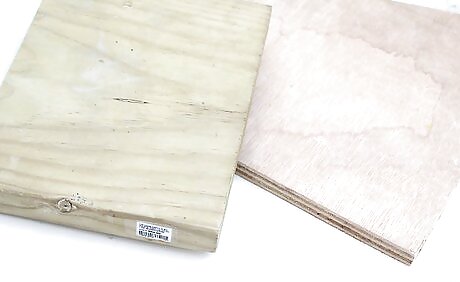
Materials: Wood and something for the thongs. A good hardwood like Red Oak will last longer and should be available at your local Lowes or Home Depot. Alternatively, try a lumberyard.
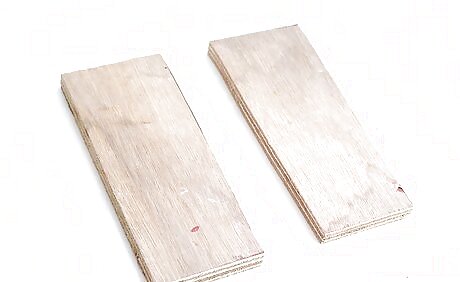
Soles and ha: The soles for the typical adult geta are about 4 or 5 inches (10.2 or 12.7 cm) wide, 9 to 11 inches (22.9 to 27.9 cm) long, and ⁄2 to ⁄4 inch (1.3 to 1.9 cm) thick. The ha are the same width, about 1 to 1 ⁄2 inches (2.5 to 3.8 cm) thick and 2 to 4 inches (5.1 to 10.2 cm) high. The total wood requirements are about 2 feet (0.6 m) of 4 or 5 inch (10.2 or 12.7 cm) wide by ⁄2 to ⁄4 inch (1.3 to 1.9 cm) thick wood. And about a foot of wood 4 or 5 inches (10.2 or 12.7 cm) wide by 1 to 1 ⁄2 inches (2.5 to 3.8 cm) thick.
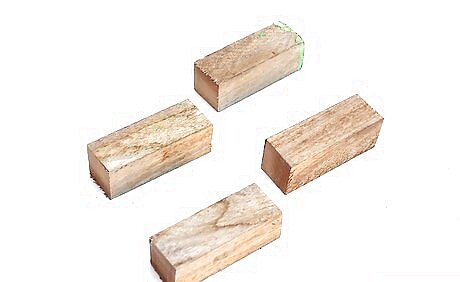
Be aware most lumber yards (and Lowes) only sell "full" boards, usually 8 feet (2.4 m) long. You can make geta for all your friends with the left over wood. Some places (Home Depot) will cut the wood to your dimensions, or will let you cut them yourself. There might be a charge for this -- an advantage of finding a place that does this is even if you do your own cutting, they will have scraps that are for sale so you may not have to buy 8 feet (2.4 m) after all. You can make the soles of geta out of plywood. A big disadvantage of plywood is it's usually only sold in 4 by 8 foot pieces. Once again ask about scraps. Before buying any type of wood, however, make sure it isn't pressure treated. This type of wood has been treated with potentially harmful chemicals to keep termites at bay, and is usually used for housing/outdoor projects. Pressure treated wood is usually darker in color, and, unfortunately, most wood sold at Home Depot and Lowe's has been pressure treated. Try a local lumberyard for wood that hasn't been pressure treated.
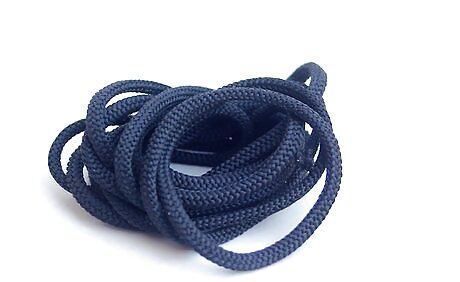
Have the materials for Thongs: You can try using nylon rope from the hardware store for the thongs, but it's not very comfortable. The thongs in Japanese made geta are made of several layers. Innermost is some sort of natural fiber rope around ⁄8 inch (0.3 cm) in diameter. Perhaps jute or hemp. Walmart does sell a 100% cotton cord which is a good thickness and is extremely comfortable.
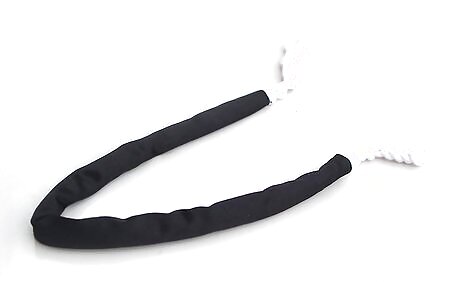
Add the next layer which brings the total diameter to nearly ⁄2 inch (1.3 cm) is some sort of fuzzy stuff that's like the gray padding you see in some shipping envelopes -- it looks like lint. This is wrapped with brown paper, then inserted into a tube of black cloth. The cloth is very thin but has a fuzzy surface like felt. Try decorative piping that you can buy at a fabric store. It's available in several diameters, very soft, and unfortunately only seems to come in white. Try dying some black, but it may shrink and lose a lot of its softness. More experimentation is needed here such as finding a way to "paint" it without soaking it, or using a non-water based dye, or maybe starting with thicker piping. Perhaps a larger store may have it in other colors. The best diameter is ⁄2 inch (1.3 cm) which is very comfortable, and can be pulled (barely) through a 1/4 hole. Try buying stuff actually marked 16/32".
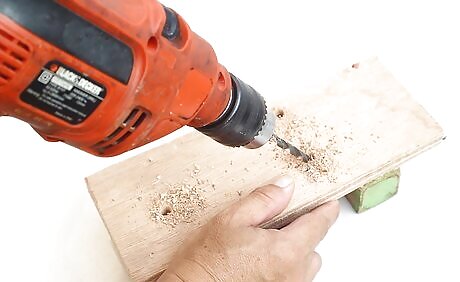
Get about 1 ⁄2 yards (1.4 m) for each pair.
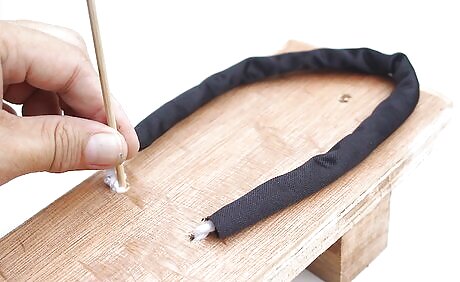
Be aware of this Miscellaneous fact: ⁄8 inch (0.3 cm) nylon cord or rope for the small loop that holds the main thong between the toes. This doesn't really have to be soft, but should be the same color as the main thong. You'll only need about a foot to make a pair of geta.

Have Carpenter's glue. This is packaged like Elmer's and other white glues, but is yellow. Titebond is a good brand. It's stronger and more suited for wood. You can use hot glue to attach the ha. It's harder to work with because you don't really have time to fix mistakes. With a slow drying glue you can always slide the pieces into better position even after several minutes.
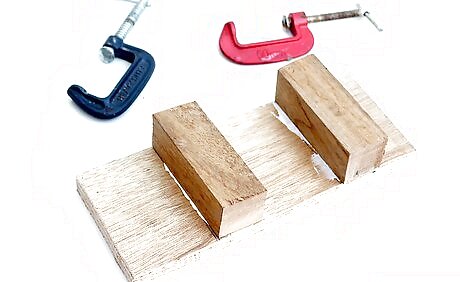
Start thinking about ways to clamp the pieces in position while the glue dries. A good option is genuine glue clamps. You can buy them at Walmart for a few dollars each. They're like a giant pair of plastic pliers with a spring that holds them closed. You might want to get black plastic with red jaws and open to 4 inches (10.2 cm). If you really don't care about cost then buy some metal C-clamps. These ensure a tight bond, but don't tighten too hard, or all the glue will squeeze out and leave a dry, loose fitting joint.

Put a couple large rubber bands around the pieces, tightly wrap masking tape around it, or to pile books or bricks on the joint. Around 10 pounds pressure is plenty

For the single piece Geta, it's going to take considerably more effort, but the result is a more authentic (and more durable) alternative to the fake geta. Cut two rectangular blocks each matching the combined dimensions above that will encompass the whole of the sandals. These will become both the soles and ha. Make a template and draw out the measurements on the blocks of wood until you have a basic idea of how you're going to cut things. You're going to have two lines that represent the inside edges of the ha, that stop at where the sole will be. Cut these edges and stop at the sole, and then slowly chisel out the rectangular space between the two ha. After that, cut the outer edges of the ha and cut the bottom edges of the sole. repeat this with the second piece, sand, and you're done. You'll most likely have to touch up the bottom of the sole between the two ha.
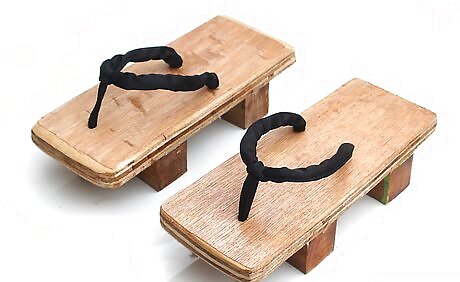
Finishing- To protect your wood from water/sweat damage, I suggest using polyurethane or another kind of wood finish to protect the wood. This also brings out the Red Oak's natural color and darkens it a bit. Oil based polyurethane works the best.




















Comments
0 comment